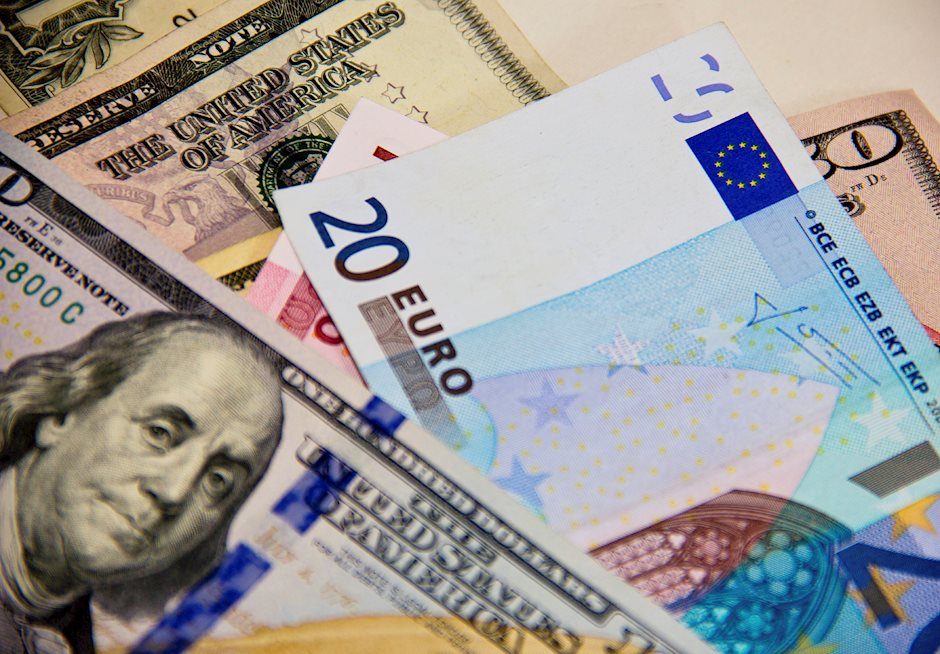EUR/USD recovers further from multi-month low, moves to 1.0800 ahead of flash PMIs
- EUR/USD attracts some buyers on Thursday amid a modest USD pullback from a three-month high.
- Expectations for a less aggressive policy easing by the Fed should help limit losses for the Greenback.
- Bets for a jumbo ECB rate cut in December might undermine the Euro and cap the upside for the pair.

The EUR/USD pair gains some positive traction during the Asian session on Thursday and for now, seems to have snapped a three-day losing streak to its lowest level since early July, around the 1.0760 area touched the previous day. Spot prices climb back closer to the 1.0800 mark in the last hour amid a modest US Dollar (USD) downtick, though the fundamental backdrop warrants some caution for bullish traders.
The US Treasury bond yields retreat from a three-month high prompt some USD profit-taking following the recent strong rally to the highest level since late July. That said, growing acceptance that the Federal Reserve (Fed) will proceed with modest rate cuts, along with investors' nervousness ahead of the US Presidential election on November 5, should act as a tailwind for the safe-haven Greenback. Apart from this, dovish European Central Bank (ECB) expectations should keep a lid on any meaningful appreciating move for the EUR/USD pair.
The annual inflation rate in the Eurozone fell to 1.7% in September, below the ECB’s 2% target for the first time since June 2021. This validates the central bank's view that the disinflationary process is well on track and supports prospects for further policy easing. Moreover, ECB Mario Centeno said on Wednesday that downside risks dominate growth and inflation and that a 50 basis points (bps) rate cut in December is on the table. Moreover, ECB's Bostjan Vasle said that recent data presents some risks that might delay the expected improvement in growth.
This, in turn, might hold back traders from placing aggressive bullish bets around the shared currency and cap the upside for the EUR/USD pair. Market participants now look to the release of the flash PMI prints from the Eurozone and the US, which might provide fresh insight into the health of the global economy and in turn, influence the broader risk sentiment. Apart from this, the US bond yields will drive the USD and provide some impetus. Nevertheless, the fundamental backdrop suggests that the path of least resistance for spot prices is to the downside.
Economic Indicator
HCOB Composite PMI
The Composite Purchasing Managers’ Index (PMI), released on a monthly basis by S&P Global and Hamburg Commercial Bank (HCOB), is a leading indicator gauging private-business activity in the Eurozone for both the manufacturing and services sectors. The data is derived from surveys to senior executives. Each response is weighted according to the size of the company and its contribution to total manufacturing or services output accounted for by the sub-sector to which that company belongs. Survey responses reflect the change, if any, in the current month compared to the previous month and can anticipate changing trends in official data series such as Gross Domestic Product (GDP), industrial production, employment and inflation. The index varies between 0 and 100, with levels of 50.0 signaling no change over the previous month. A reading above 50 indicates that the private economy is generally expanding, a bullish sign for the Euro (EUR). Meanwhile, a reading below 50 signals that activity is generally declining, which is seen as bearish for EUR.
Read more.Next release: Thu Oct 24, 2024 08:00 (Prel)
Frequency: Monthly
Consensus: 49.7
Previous: 49.6
Source: S&P Global
Author

Haresh Menghani
FXStreet
Haresh Menghani is a detail-oriented professional with 10+ years of extensive experience in analysing the global financial markets.

















